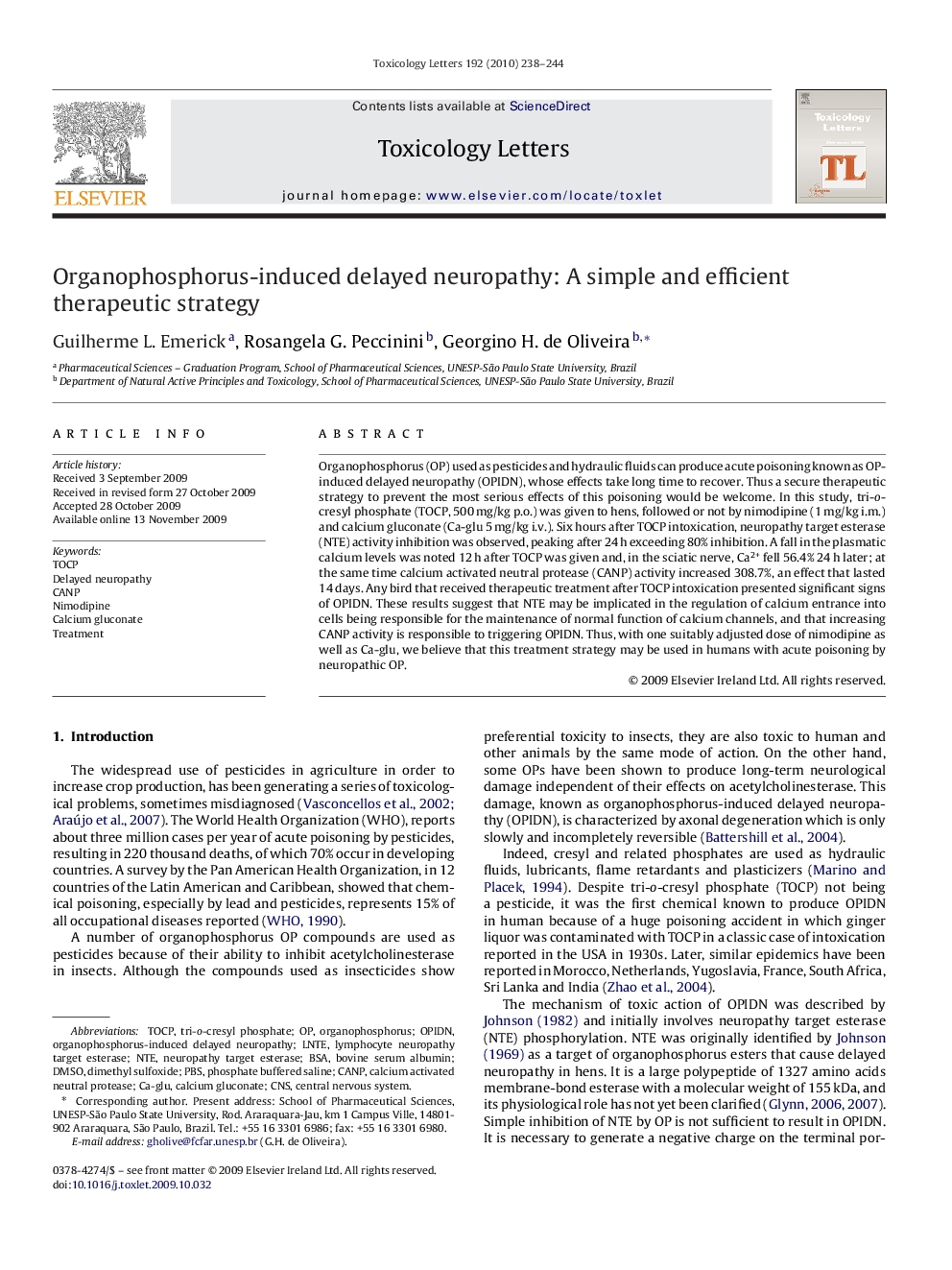| Article ID | Journal | Published Year | Pages | File Type |
|---|---|---|---|---|
| 2600687 | Toxicology Letters | 2010 | 7 Pages |
Organophosphorus (OP) used as pesticides and hydraulic fluids can produce acute poisoning known as OP-induced delayed neuropathy (OPIDN), whose effects take long time to recover. Thus a secure therapeutic strategy to prevent the most serious effects of this poisoning would be welcome. In this study, tri-o-cresyl phosphate (TOCP, 500 mg/kg p.o.) was given to hens, followed or not by nimodipine (1 mg/kg i.m.) and calcium gluconate (Ca-glu 5 mg/kg i.v.). Six hours after TOCP intoxication, neuropathy target esterase (NTE) activity inhibition was observed, peaking after 24 h exceeding 80% inhibition. A fall in the plasmatic calcium levels was noted 12 h after TOCP was given and, in the sciatic nerve, Ca2+ fell 56.4% 24 h later; at the same time calcium activated neutral protease (CANP) activity increased 308.7%, an effect that lasted 14 days. Any bird that received therapeutic treatment after TOCP intoxication presented significant signs of OPIDN. These results suggest that NTE may be implicated in the regulation of calcium entrance into cells being responsible for the maintenance of normal function of calcium channels, and that increasing CANP activity is responsible to triggering OPIDN. Thus, with one suitably adjusted dose of nimodipine as well as Ca-glu, we believe that this treatment strategy may be used in humans with acute poisoning by neuropathic OP.
